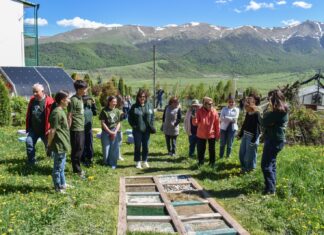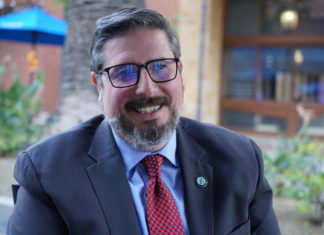By Dr. Cara Aghajanian
Special to the Mirror-Spectator
This week marked seminal events for the Armenian community, Lebanon, and the world. As part of his cause for canonization, the mortal remains of Servant of God Cardinal Gregorio Pietro XV Agagianian (Կարտինալ Գրիգոր Պետրոս ԺԵ Աղաճանեան) were transferred from his tomb in Rome to his newly dedicated chapel in the Armenian Catholic Cathedral of St. Elias and St. Gregory in Beirut. The preparations for this solemn event were surrounded by a sense of profound joy and love. In his many travels representing the Holy Father around the globe, Cardinal Agagianian was met with crowds from all faiths and all walks of life. However, I think even he would be surprised by the crowds that greeted him on his return to Lebanon.

On the 12th of September, in a quiet ceremony, he began his trip back to Beirut. As we left the church in Rome and made our way to the airport, I found myself thinking of his first trip from his home in Akhaltsikhe [today in Georgia], to Rome at the age of 11. I think of the many emotions both for him and his mother. At that moment, they could have never imagined the places he would see, the events he would influence, or the lives he would change. I could not help but think how he is still influencing the world.

As a child, I often heard about Cardinal Agagianian. However, it’s only as I became an adult that I really understood who he was and what his impact was on the world. So, “who was Cardinal Agagianian?” He was truly multifaceted. He was a devoted follower of Christ whose mission was to spread the Gospel and Christ’s love around the world. As a devoted priest, he cared for his Armenian people during some of the most tragic moments in our history. Going beyond our community, he brought this love and dedication to the whole world through his many travels representing the Holy Father. He was multilingual with a sharp intellect, able to enliven the teachings of the Church. He was a person with whom anyone, regardless of faith or social status, could relate to and seek advice. In such a chaotic world, we could learn from his example of bringing people together to build a common peace.
Cardinal Agagianian was not only a pastor for the Armenian Church, but for the wider Catholic Church. He was ordained a priest in 1917. After serving in his home parishes, he returned to Rome and in 1921 became assistant rector of the Pontifical Armenian College in Rome. He was made rector in 1932. In 1937 he was elected as Patriarch of the Armenian Catholic Church. In 1946 he was made a Cardinal, one of only two Armenians in history. As a cardinal he participated in two papal conclaves, 1958 and in 1963. His intellect and spirituality were recognized and led him to key roles in the Church.











